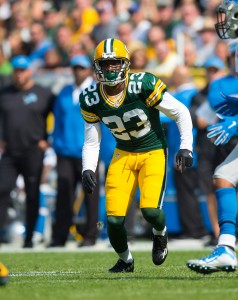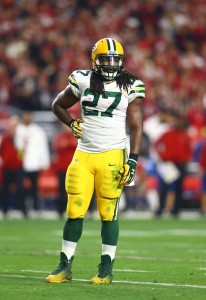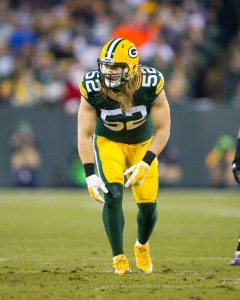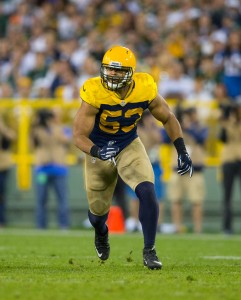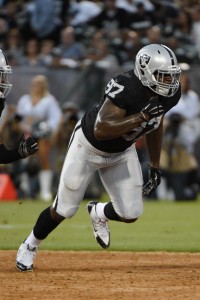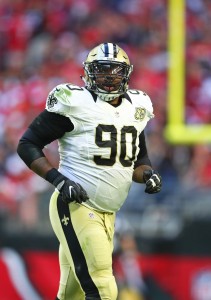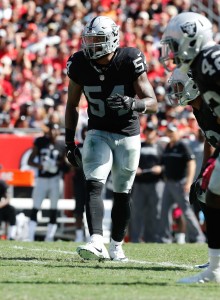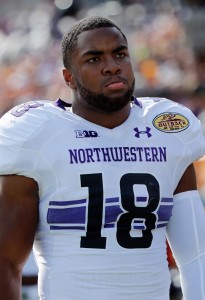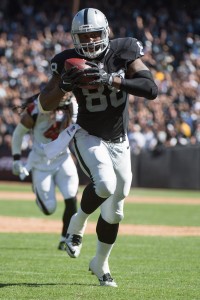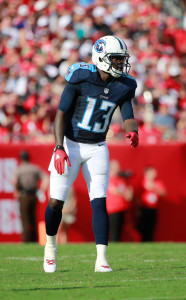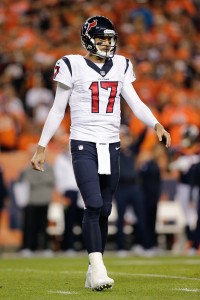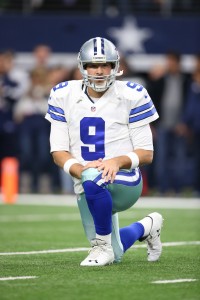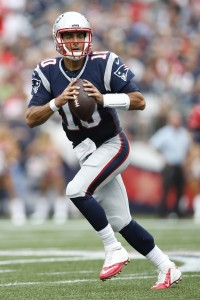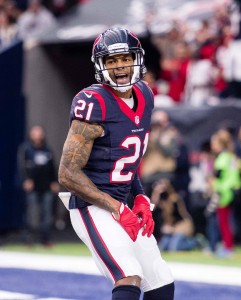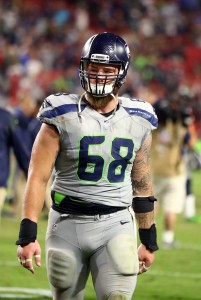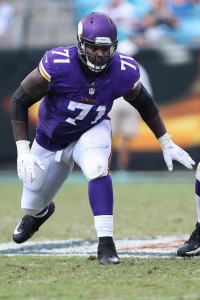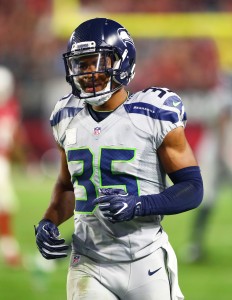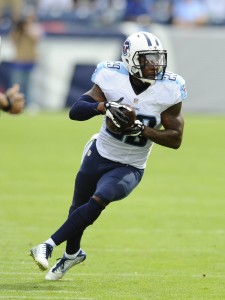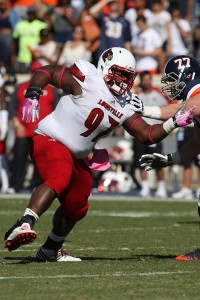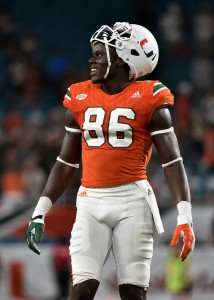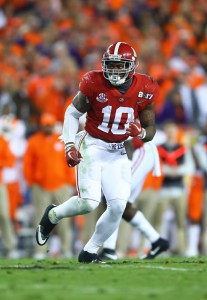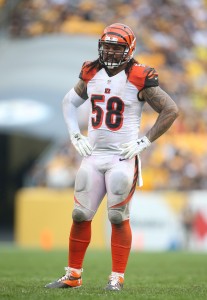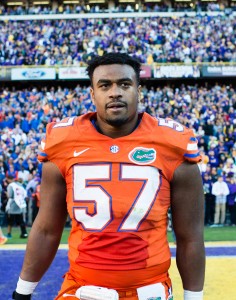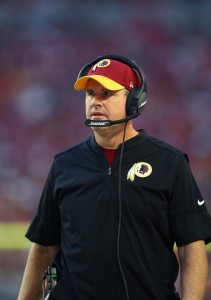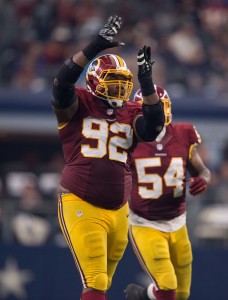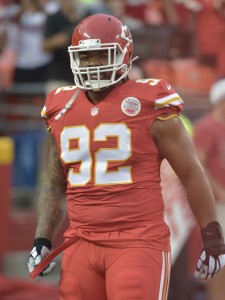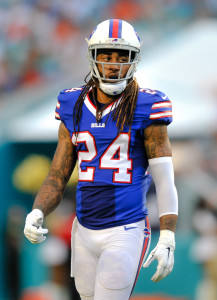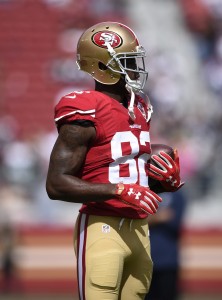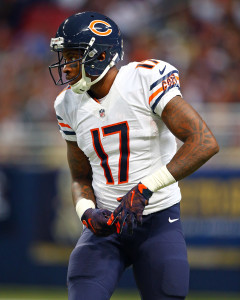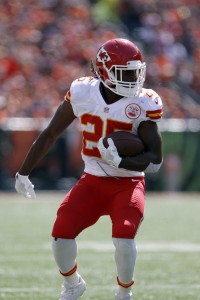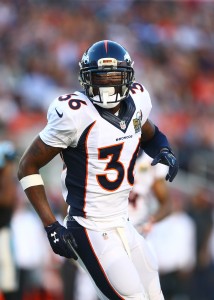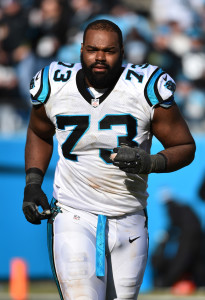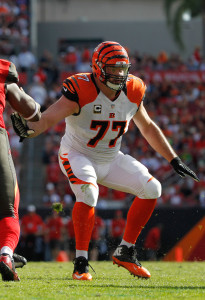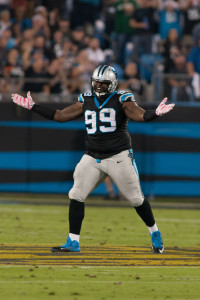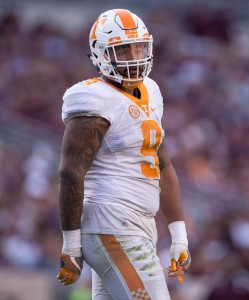In advance of March 9, the start of free agency in the NFL, Pro Football Rumors will detail each team’s three most glaring roster issues. We’ll continue this year’s series with the Chicago Bears, who regressed to a 3-13 record in their second season under head coach John Fox‘s leadership.
Pending Free Agents:
- Sam Acho, LB
- Mike Adams, T
- Johnthan Banks, CB
- Matt Barkley, QB (RFA)
- Connor Barth, K
- Nick Becton, T
- Josh Bellamy, WR (ERFA)
- Daniel Brown, WR (ERFA)
- Brandon Boykin, CB
- Bryce Callahan, CB (ERFA)
- David Fales, QB (ERFA)
- Brian Hoyer, QB
- Demontre Hurst, WR (RFA)
- Alshon Jeffery, WR
- Christian Jones, LB (RFA)
- Eric Kush, OL
- Ted Larsen, OL
- Danny Mason, LB (ERFA)
- Matt McCants, T
- Logan Paulsen, TE
- Chris Prosinski, S
- Patrick Scales, LS (ERFA)
- Connor Shaw, QB (ERFA)
- Deonte Thompson, WR
- Cornelius Washington, DE
- C.J. Wilson, DL
- Marquess Wilson, WR
Top 10 Cap Hits for 2017:
- Jay Cutler, QB: $16,000,000
- Kyle Long, G: $8,000,000
- Pernell McPhee, LB: $7,825,000
- Lamarr Houston, LB: $6,990,000
- Danny Trevathan, LB: $6,850,000
- Josh Sitton, G: $6,822,916
- Bobby Massie, T: $6,034,275
- Akiem Hicks, DE: $5,500,000
- Eddie Royal, WR: $5,000,000
- Kevin White, WR: $4,517,195
Other:
Three Needs:
1) Secure a long-term option at quarterback: Jay Cutler is fresh off the worst Total Quarterback Rating of his career, and whether that was a product of multiple injuries or the fact that former offensive coordinator Adam Gase is no longer around, Cutler is almost assuredly set to be released this offseason. Not only is Bears head coach John Fox reportedly “done” with Cutler, but Chicago can clear $14MM off its books by cutting the 33-year-old QB this spring. Of course, by parting ways with Cutler, the Bears would be creating another gaping vacancy at the most important position in the game, meaning the club would need to conduct an extensive search for a franchise quarterback this offseason.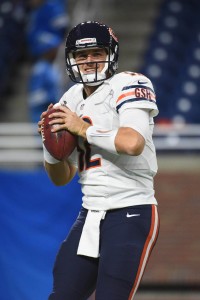
The Bears do have at least one other signal-caller currently on the roster who could provide some sort of value in Matt Barkley, though he clearly doesn’t solve Chicago’s long-term problems under center. The former fourth-round pick likely made himself some money during the 2016 campaign by proving he can sustain backup level production, but he completed less than 60% of his passes, tossed 14 interceptions in six starts, and ranked 25th in DYAR among 34 qualifiers, per Football Outsiders. Barkley, who can be retained through the restricted free agent system, could potentially serve as a bridge quarterback in 2017, but the Bears shouldn’t pin their hopes on him.
Veteran Brian Hoyer also fits into the bridge QB discussion, as the 31-year-old managed six touchdowns against no picks in five starts last season before going down with a broken non-throwing arm. Hoyer had to settle for a one-year, $2MM deal last offseason despite a quietly productive 2016 campaign with the Texans, and he could be forced to agree to a similar contract this spring. With Barkley likely coming back next season, the Bears needn’t be forced to retain Hoyer, but if the club can get him back on a cheap pact, he’s not a poor option to have around.
Even if Barkley and Hoyer are kept around, Chicago still clearly needs to find a signal-caller who can lead the club for the long haul. The organization isn’t going to find such a player in free agency, where Mike Glennon represents the best target outside of Kirk Cousins, who seems likely to remain in Washington. The draft, then, represents the best avenue for the Bears to land their next quarterback, and the team’s front office has reportedly been researching the 2017 class of QBs for some time.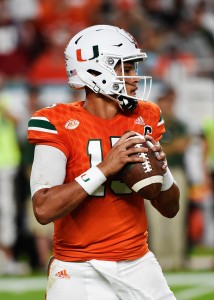
Miami’s Brad Kaaya has been the one collegiate prospect to be directly linked to the Bears, as Matt Miller of Bleacher Report said in November that Chicago was putting in “extensive research” on the Hurricanes quarterback. Generally considered one of the top four or five QBs available this year, Kaaya is expected to be selected on Day 2. Dane Brugler of CBSSports.com credits Kaaya for his toughness, and says the 21-year-old has an “unforced throwing motion with the arm strength to make all the necessary NFL throws,” but notes that Kaaya could improve his poise under pressure.
Given that Chicago holds the third overall pick, however, the club doesn’t have to settle for Kaaya or another mid-round option, and could target one of the top three quarterbacks available this year: Clemson’s Deshaun Watson, North Carolina’s Mitch Trubisky, or Notre Dame’s DeShone Kizer. Of course, the two teams drafting ahead of the Bears — the Browns and 49ers — are also in the market for a quarterback, so Chicago’s choice could be limited once it officially gets on the clock. Still, the Bears should get a shot at one of those three QBs, and though the club hasn’t been specifically linked to any of the trio t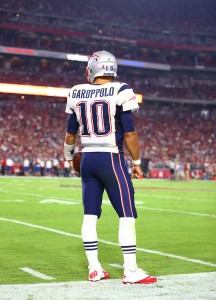 hus far, it’s entirely fair to assume Chicago will go after a quarterback at No. 3.
hus far, it’s entirely fair to assume Chicago will go after a quarterback at No. 3.
The trade market could be yet another route for the Bears, especially since one NFL executive recently told Bucky Brooks of NFL.com that he’s “scared to death” of the 2017 quarterback draft class. Tony Romo could make sense for Chicago, but general manager Ryan Pace & Co. are probably looking for a signal-caller who can stick around for awhile. Instead of Romo, then, the Bears might target another Eastern Illinois graduate, Patriots backup Jimmy Garoppolo, whom New England is reportedly willing to deal this offseason. The Pats, though, are thought to be seeking a first- and fourth-round pick in exchange for Garoppolo, an extremely high ask especially considering that Garoppolo would still need to be extended. The Bengals’ A.J. McCarron, who is open to being traded, could represent a more affordable target.
Read more
2) Fix the secondary: Chicago’s front office spent much of the 2016 offseason adding talent to its defense: defensive lineman Akiem Hicks, and linebackers Jerrell Freeman, Danny Trevathan, and Leonard Floyd were acquired through free agency/the draft, and each provided production during their first season in the Windy City under the guidance of defensive coordinator Vic Fangio. The one area of the defense that wasn’t addressed was the secondary, leaving the back end as an obvious area of need in 2017.
Let’s start with safety, where the Bears already have one spot locked down thanks to 2015 fifth-round pick Adrian Amos. The most successful Chicago draft choice from last season, Amos has started 30 games during his first two years in the league, and in 2016 graded out as the NFL’s No. 26 safety, per Pro Football Focus. Opposite Amos, Harold Jones-Quartey, Deon Bush, Chris Prosinski, Demontre Hurst, and DeAndre Houston-Carson all saw varying levels of playing time, though Jones-Quartey played the most snaps (732).
Typically, safeties aren’t enough of a positional priority to justify a top-five pick, but the 2017 draft class features two back-end defenders whom the Bears could look at with the third overall selection. Ohio State’s Malik Hooker and LSU’s Jamal Adams both rank among the four best players in the entire draft, according to Daniel Jeremiah of NFL.com, who adds that both Hooker and Adams are ready to start right away. Safeties who could be available when Chicago’s turn comes up on Day 2 include Budda Baker (Washington), Jabrill Peppers (Michigan), and Marcus Williams (Utah).
Free agency isn’t full of talented safeties, but there are two options who each graded within PFF’s top-10 at the position: Kansas City’s Eric Berry and Arizona’s Tony Jefferson. Recent reports have indicated the Chiefs are more likely to place the franchise tag on defensive tackle Dontari Poe than Berry, meaning the veteran safety could hit the market this spring (unlike last year when Kansas City did employ the franchise tender). Jefferson, 25 this week, should draw a great deal of interest, though — surprisingly — no club signed him to an offer sheet in 2016 after the Cardinals tendered him at the lowest restricted free agent level.
Other free agent safeties that could attract the eye of Bears management include Jonathan Cyprien (Jaguars), Barry Church (Cowboys), Duron Harmon (Patriots), and D.J. Swearinger (Cardinals). Colts defensive backs Mike Adams and Darius Butler — the latter of whom recently said he’s comfortable making the transition to safety — could also make sense, especially given that former Indianapolis safeties coach Roy Anderson is now Chicago’s assistant DBs coach. Adams, at age-36, would clearly represent more of a “win-now” addition, so Butler (30) might be the more palatable option. San Francisco’s Antoine Bethea could be of interest if he gets released, thanks to the presence of former 49ers coaches Fangio and Ed Donatell in Chicago.
Cornerback is perhaps even an even more dire need than safety, as the Bears could use at least two new starters at the position. 2014 first-round Kyle Fuller, who missed the entirety of last season, doesn’t figure to be among them, as Chicago looks increasingly likely to trade or release Fuller before next season. Cre’Von LeBlanc, an astute 2016 waiver pickup by GM Ryan Pace, showed enough during his rookie campaign that he could be asked to take on a larger role in 2017, but veteran Tracy Porter is in danger of being cut after grading out as the league’s fifth-worst cornerback, per PFF.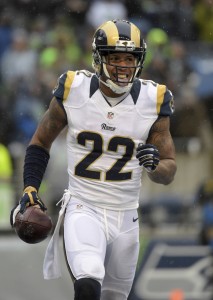
While the Bears could certainly target a corner like Ohio State’s Marshon Lattimore at pick No. 3, the club will more likely turn to the open market in its search for defensive backs. Ideally, Chicago would come out of the free agent period with one top-tier CB and one second-tier CB, and fill in the rest of the secondary through the draft. Given the Bears’ salary cap situation, and the fact they likely won’t be paying an elite quarterback salary, it would be a disappointment if the team wasn’t holding one of A.J. Bouye, Trumaine Johnson, Stephon Gilmore, or — at the very least — Dre Kirkpatrick when the free agent dust clears. Logan Ryan, Nolan Carroll, Brandon Carr, or Prince Amukamara would make for fine No. 2 corner targets.
3) Retain Alshon Jeffery: The Bears are likely to open the 2017 season with a young quarterback under center, so the club needs to start thinking of ways to ensure his development. Chicago already boasts an above-average offensive line, a talented running back, and a reliable veteran tight end. Receiving weapons are the next logical priority, and the Bears have a decision to make on one of their own: Alshon Jeffery, who projects as the best pass-catcher available on the 2017 free agent market.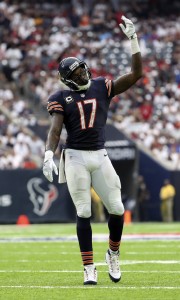
Jeffery, who turns 27 years old next month, was franchised last offseason, meaning he was paid a fully guaranteed one-year salary of $14.599MM. The Bears can use the franchise tag again in 2017, although it will require them to raise Jefferey’s salary by 120% to ~$17.5MM. While such a price tag would make Jeffery the highest-paid WR on a per-year basis, using the tag for a second consecutive looks like Chicago’s best course of action. Jeffery has dealt with a myriad of injuries throughout his career and was suspended four games for PEDs in 2016, so it’s fair to wonder if the Bears fully trust him. However, it’s probably better to keep Jeffery around for one more season at an admittedly high cost than to hand him significant guarantees to lock him up through his early-30s.
If Jeffery walks in free agency, the Bears’ receiver depth chart looks incredibly sparse. Cameron Meredith was a mini-sensation who posted four games with nine-plus receptions and more than 100 yards, but he also struggled through a three-game stretch where he managed only one catch per contest, so it’s unclear if Chicago views him as a clear starter going forward. Former first-round pick Kevin White remains a total question mark after being injured for most of his first two years in the league, while veteran slot man Eddie Royal is expected to be cut this offseason.
The Bears have too many other holes to use a first- or second-round pick on a receiver, so if Jeffery leaves and they need to replace him, they’ll have to wade into free agency. The problem is, as noted, that Jeffery is the clear No. 1 WR available, and the dearth of other options figures to drive up the prices of Terrelle Pryor, Michael Floyd, DeSean Jackson, and the like. Could Chicago compete with a receiving corps of Meredith, Daniel Braverman, and one of Kenny Stills, Kenny Britt, or Robert Woods? Maybe, but the presence of Jeffery would better grease the offensive wheels.
